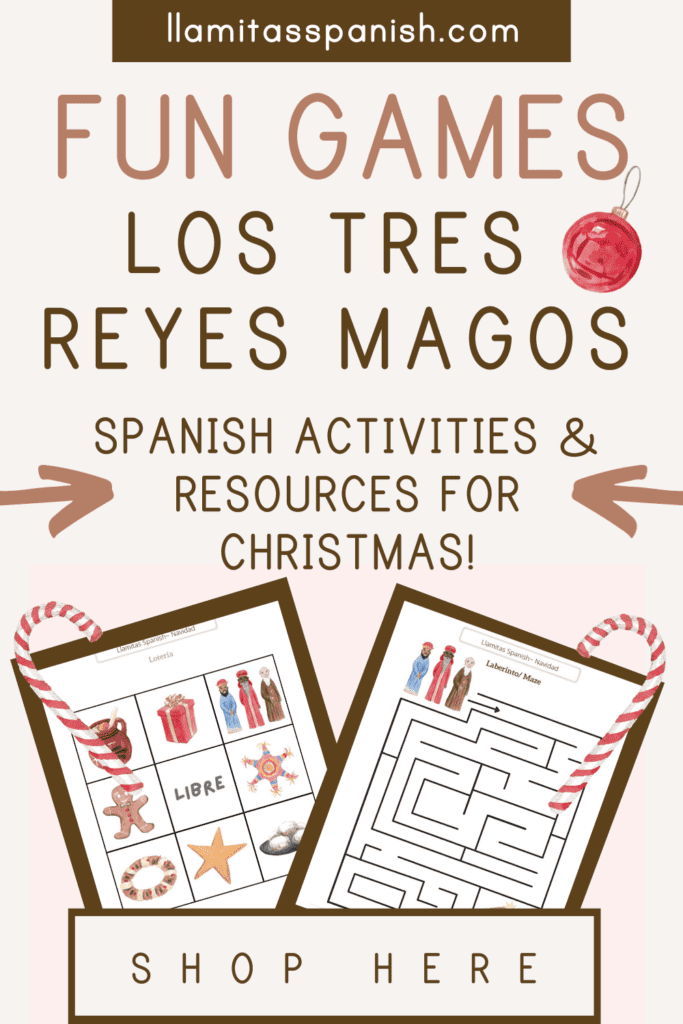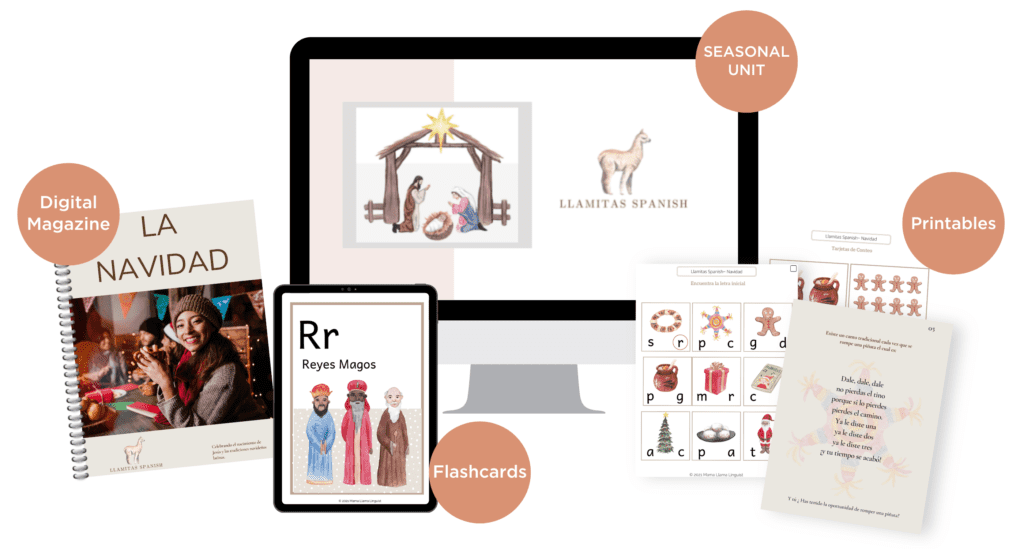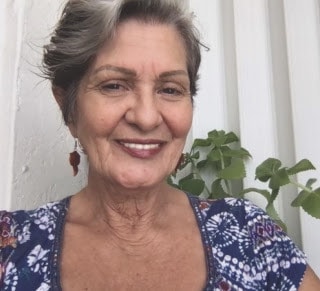In this post: Learn about el Día de los Reyes Magos (Three Kings Day) and how it’s celebrated in the Hispanic culture. Plus fun activities for kids!
As the Christmas holidays approach, many bilingual/bicultural Hispanic/Latino families are not only preparing to celebrate la Navidad, but also looking forward to celebrating Three Kings Day, el Día de los Reyes Magos, or simply el Día de los Reyes.
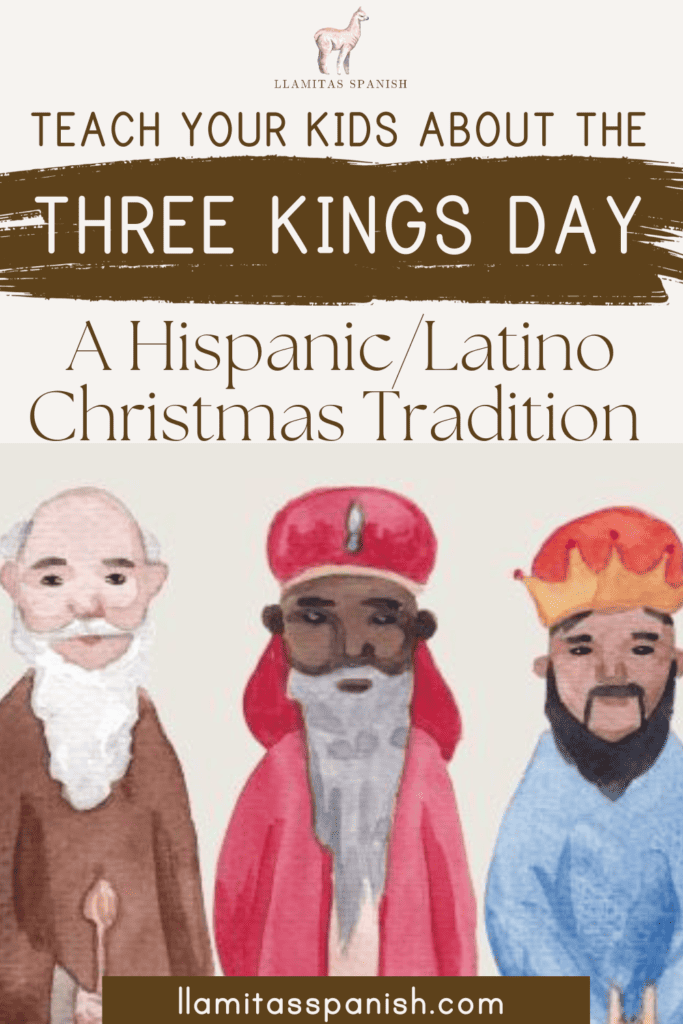
This delightful Hispanic holiday takes place each year on January 6, and is celebrated widely across Spain and Latin America.
If you’re using our Llamitas Spanish Language Curriculum to teach your child Spanish at home, a great way to enhance their learning experience is to include cultural exposure along with language education.
Exposing your children to Hispanic/Latino cultural traditions such as Día de los Reyes gives the Spanish language a cultural context that your kids can instinctively connect to, while also adding more opportunities to use your Spanish language skills throughout the year.
Table of Contents
What is the origin of Los Tres Reyes Magos?
El Día de los Reyes Magos celebrates what is known in the Catholic religion as the Epiphany.
It is founded upon the Biblical story of three kings who followed the North Star to Bethlehem to bring offerings and gifts to baby Jesus as a celebration of his birth.
This is why in bicultural Hispanic/Latino households that celebrate Christmas, Los Reyes arrive with gifts only a few days after Santa Claus!
The Three Kings holiday dates back all the way to the 4th century, during which time it became very popular in the Roman province of Hispania, in the region known today as Spain and Portugal.
As Spanish and Portuguese culture spread across the Atlantic Ocean to the New World, this cultural tradition found its way to Mexico, Central and South America, and the Spanish Caribbean.
Who are Los Reyes Magos?
Los Reyes Magos – known in English as the Magi, the Three Wise Men, or the Three Kings – were three kings from faraway Eastern kingdoms who banded together and followed the North Star along a journey, across the desert to the tiny town of Bethlehem, to celebrate the birth of baby Jesus.
The Kings were named Melchior, Gaspar, and Baltazar, and the gifts they brought to baby Jesus consisted of gold, frankincense and myrrh.
To this day, a special blend of incense is still burned in Catholic churches that consists of frankincense and myrrh, in honor of the gifts that the Three Kings brought to baby Jesus.
How is Día de Los Reyes celebrated around the world?
While every country adds its own cultural touches to the Día de los Reyes tradition, the basis for the celebration of this holiday is more or less the same everywhere. The celebration begins on the víspera, or eve of the Three Kings Day, which is the evening of January 5, also known as Twelfth Night, and concludes on the day of January 6, often with a celebratory parade that closes out the Christmas holiday season in Hispanic/Latino culture.
In Mexico, the Reyes celebration begins on January 5, or the Twelfth Night of Christmas, during which time local bakeries are flooded with patrons lined up to purchase the traditional ‘rosca de Reyes’ (known in English as a King Cake). This special cake is shaped in the form of a ring, representing the crown of each of the three Wise Men.
But the rosca de Reyes is no ordinary cake! Inside each rosca de Reyes is hidden a special surprise: a tiny baby doll representing baby Jesus.
Tradition holds that whoever gets the piece of cake that has the little doll inside of it will be responsible for organizing a party on February 2, also known as Candlemas, the Festival of Lights, or Día de la Candelaria, a feast which is celebrated with burning candles.
On the night of January 5, children will place one clean shoe beside the door of their home, containing a letter to their favorite King (mine was always Baltazar!) and when they wake up the following morning, they will find gifts that the Reyes Magos have left inside their shoe.
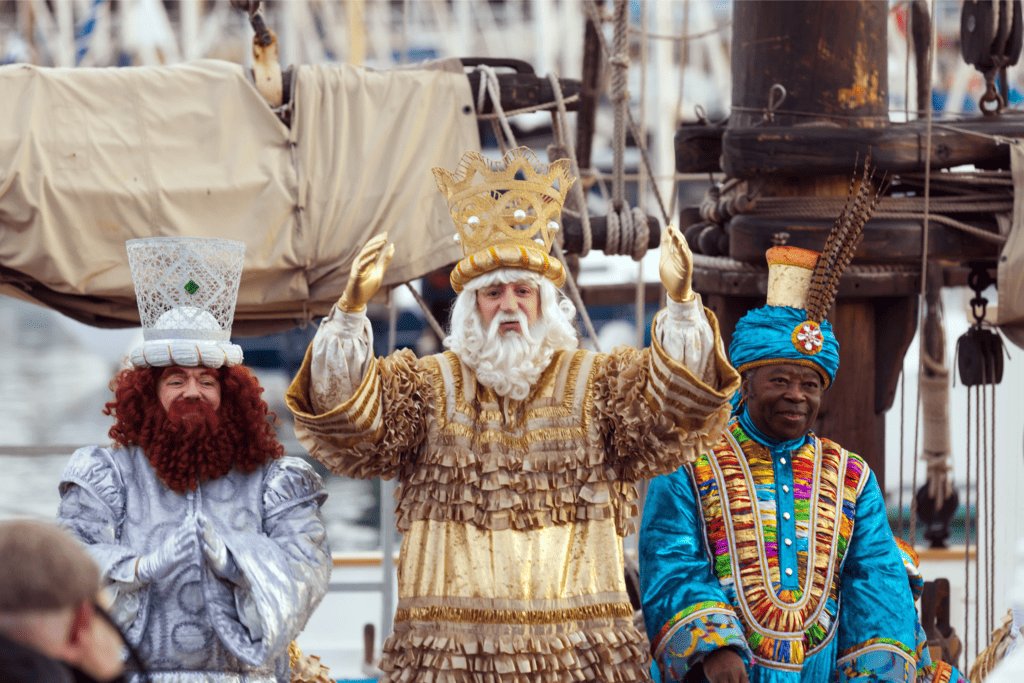
While most of South and Central America celebrates the Three Kings holiday in a similar manner (without the rosca), with children leaving shoes beside the door, along with water and boxes filled with grass for the Kings’ camels, Peru incorporates some unique touches to the celebration, thanks to historical events that occurred in Peru on that date.
Peruvian history notes that on January 6, Francisco Pizarro baptized Lima as the City of Kings, having at last found the perfect location to establish the new Peruvian capital. The commemoration of this event, known as the Bajada de los Reyes, is actually more significant than the actual Día de los Reyes itself.
In the Spanish Caribbean countries of Cuba, Puerto Rico, and the Dominican Republic, the traditional Reyes celebration is much the same as in other locations, with children leaving out shoes and receiving gifts.
But in these Caribbean countries, Día de los Reyes also represented the only day of the year during which Black slaves were allowed to celebrate and play their traditional music, as the yearly Reyes parade passed through their city.
For this reason, in those countries, Día de los Reyes also often includes African-inspired celebrations with drumming and costumes as part of the Día de los Reyes parade.
In Spain, el desfile de los Reyes Magos often happens on the Twelfth Night, during which Melchior, Gaspar and Baltazar parade through the main streets of cities to the delight of children.
Once the parade is over, a very similar cake to the Mexican rosca de Reyes is served, known in this case as roscón. In fact, the roscón is the ancestor of the Mexican rosca de Reyes, from which the Mexican tradition evolved.
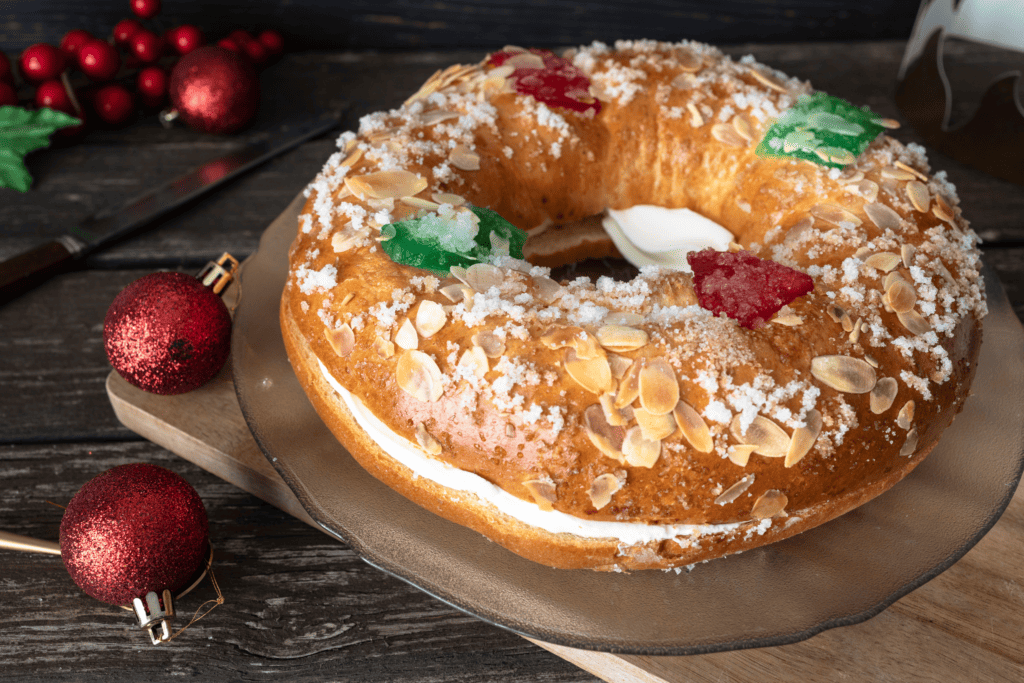
But in Spain, the surprise inside the roscón de Reyes has varied over the centuries. In the very early days of this tradition, the roscón de Reyes was baked as a symbol of a family’s opulence and wealth, and a gold coin was hidden inside the ring-shaped cake. Later, as the tradition evolved to include larger segments of the population, a dried lima bean was instead hidden in the roscón.
Today, much like in Mexico, the roscón de Reyes contains a tiny figurine, either in the shape of a baby doll or in the likeness of a king. And instead of having to organize a party on Candlemas, the lucky person who gets the piece of cake with the figurine in it will simply have to pay for the roscón.
Additionally, on January 6 across all of Spain, a special national lottery is held, known as the Lotería del Niño, and celebrating the birth of Jesus. This national lottery affords contestants an opportunity to win large sums of cash, and is celebrated yearly as part of Día de los Reyes.
Spanish Activities for Kids to celebrate Los Reyes Magos
Día de los Reyes provides your family with an incomparable opportunity to celebrate a child-centered Hispanic/Latino holiday in your home that helps your child integrate their Spanish language skills with actual immersion and pride in Hispanic/Latino traditions.
In addition to our Spanish Curriculum, Llamitas offers a wide array of resources that you can use to round out your child’s Spanish education and enjoy opportunities such as Día de los Reyes to celebrate with Hispanic/Latino books, music, and songs.
Our Seasonal bundles, designed to help you celebrate seasons and holidays in Spanish, are packed with playtime activities and teaching materials to help you enhance your child’s experience of learning Spanish, while also learning about Hispanic/Latino traditions and cultures.
And, as if all those goodies weren’t plenty, we’ve also got a jam-packed list of other holiday resources that you can use to make your navidad season a little bit more feliz!

